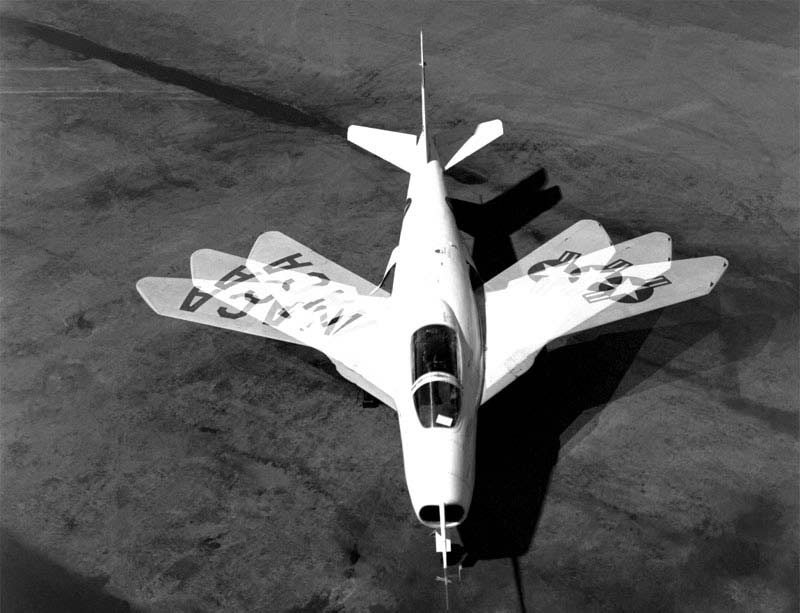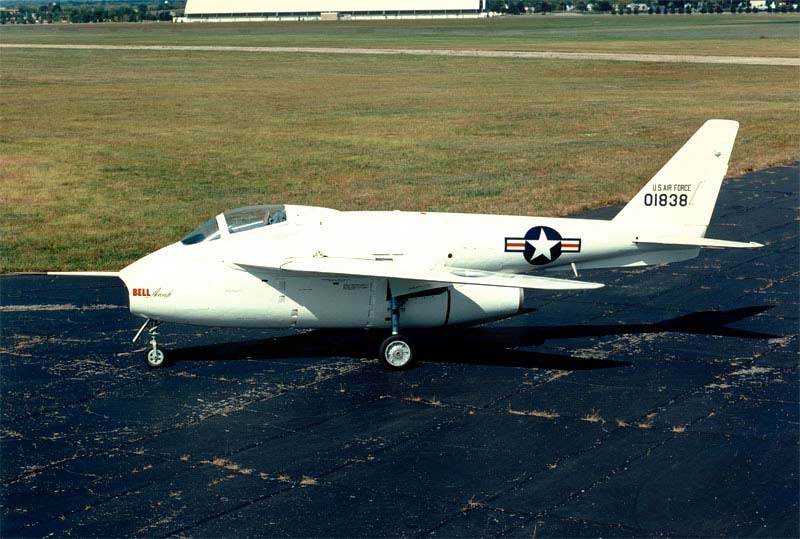The Bell X-5 was the first aircraft capable of changing wing sweepback in flight, pivotal for variable geometry wing research.
In brief
The Bell X-5 was an American experimental aircraft built by Bell Aircraft Corporation, renowned for being the first aircraft capable of changing its wing sweepback angle in flight. It was directly inspired by the German Messerschmitt P.1101 captured at the end of World War II. Only two X-5s were built, serving primarily as research aircraft to study the effects of different wing sweep angles at various speeds. This research significantly contributed to the development of variable-sweep wing aircraft, influencing designs of many future combat aircraft. Despite its limited number, the X-5 marked a pivotal moment in aviation history, providing valuable data on wing geometry and its impact on performance.
The Bell X-5 stands as a significant contributor to aviation technology, primarily through its innovative variable-sweep wing design. It played a crucial role in understanding how changing wing shapes could affect an aircraft’s speed, handling, and overall performance.

History of the Development of the Bell X-5
In the epoch of rapid technological advancements following World War II, the Bell X-5 emerged as a product of the quest for superior aircraft performance and adaptability. The aircraft was developed to explore the aerodynamic effects of variable-geometry wings, a concept that could potentially offer aircraft greater versatility in speed and performance. This research was crucial during the Cold War when air superiority was a significant focus for the United States military.
The development of the Bell X-5 was initiated by Bell Aircraft Corporation, inspired by the German Messerschmitt P.1101 prototype, which featured variable wing sweep but was not flight-ready. Bell took this concept further by creating an aircraft that could adjust its wings mid-flight, providing real-time data on the effects of wing sweep variation.
The Bell X-5 first flew on 20 June 1951. It didn’t have a NATO nickname, given its status as a unique experimental aircraft rather than a standard production model. The program’s primary objective was to gather extensive data on the performance, stability, and control of aircraft with variable geometry wings, which was a relatively unexplored area in aeronautics at the time.
Design of the Bell X-5
The Bell X-5 was notably characterized by its ability to vary the sweep of its wings from 20 degrees up to 60 degrees during flight. This adjustment was made possible through a complex system of gears and jackscrews that repositioned the wings. The aircraft had a length of approximately 33 ft (10 m) and a wingspan that varied from 21 ft (6.4 m) at 20 degrees sweep to 33 ft (10 m) at 60 degrees sweep. It weighed around 4,000 pounds (1,814 kg) empty.
The advantage of this design was the ability to study and directly observe the effects of different wing positions, informing future aircraft designs that used variable-sweep wings for optimal performance across a range of speeds and missions. However, the X-5’s complexity and mechanical vulnerabilities were significant drawbacks. The moving parts required for wing adjustment added weight and potential failure points, which were critical considerations for any aircraft, especially in high-stress flight conditions.
Performance of the Bell X-5
The Bell X-5 was powered by an Allison J35-A-17 turbojet engine, providing a maximum speed of around 716 mph (1,152 km/h) and a service ceiling of approximately 40,000 ft (12,192 m). It had a range of about 1,000 miles (1,609 km), limited more by its experimental nature and the duration of its research flights than by a lack of capability.
While the X-5 was not designed for combat and didn’t directly compare to operational military aircraft, its contributions were more in the realm of aerodynamic and flight performance understanding. Its design and the data gleaned from its flights informed the development of later aircraft, including those capable of much higher performance and with variable geometry wings, such as the F-111 and the B-1 Lancer.
Variants of the Bell X-5
Only two Bell X-5s were ever built, with no significant variant beyond the initial design. The two units were serial numbered as AF No. 50-1838 and AF No. 50-1839. Each aircraft provided valuable data, but the program did not extend beyond these prototypes due to the experimental and research-focused nature of the project.

Military Use and Combat of the Bell X-5
The Bell X-5 was never used in combat nor sold to other countries; its purpose was strictly research and development. The aircraft provided valuable data that contributed to the understanding of variable-sweep wing aerodynamics, influencing the design of future military aircraft. Its legacy is seen in various aircraft with variable geometry wings, enhancing performance across a range of speeds and missions. After the program concluded, the X-5s were retired, with their findings continuing to influence aircraft design. They were replaced in research roles by subsequent, more advanced experimental designs as technology and understanding progressed.
The Bell X-5 was an instrumental step in aviation history, marking a shift toward more versatile and adaptable aircraft designs. Though only two were built, their impact was significant, laying the groundwork for the development of variable-sweep wing aircraft that would become staples of modern military aviation. The X-5’s innovative design and the data it provided shaped the future of aircraft performance, demonstrating the enduring value of experimental aircraft in advancing technology and capabilities.
Back to the experimental aircraft section.